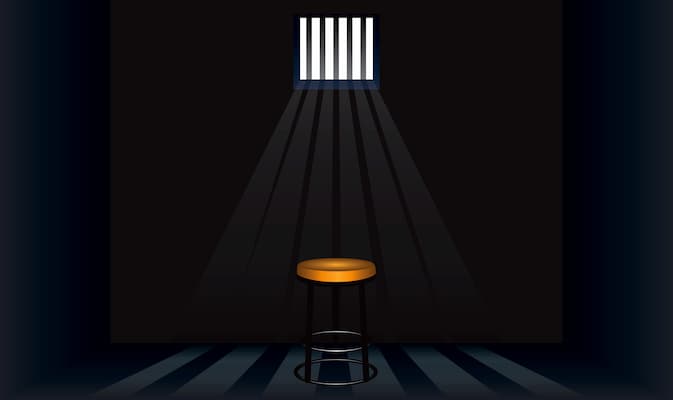 In recent years, disturbing reports have emerged about extensive and often inappropriate use of restraints—from shackle chairs to stun devices—on prisoners. In many cases, restraint tools intended for safety have been misapplied, causing injuries and even deaths. This blog dives into the issue and examines how punitive cultures and unchecked power contributes to these ongoing abuses. If you believe that a loved one has been seriously injured as a result of the improper application of restraints while in custody, contact an experienced legal team, such as Sexner Injury Lawyers LLC at (312) 243-9922 for free confidential information. No fee is ever charged unless successful.
In recent years, disturbing reports have emerged about extensive and often inappropriate use of restraints—from shackle chairs to stun devices—on prisoners. In many cases, restraint tools intended for safety have been misapplied, causing injuries and even deaths. This blog dives into the issue and examines how punitive cultures and unchecked power contributes to these ongoing abuses. If you believe that a loved one has been seriously injured as a result of the improper application of restraints while in custody, contact an experienced legal team, such as Sexner Injury Lawyers LLC at (312) 243-9922 for free confidential information. No fee is ever charged unless successful.
What Does the New Federal Report About Prisoner Restraints Say?
A July 1, 2025 report from the Justice Department’s Office of the Inspector General (OIG) criticized the Federal Bureau of Prisons (BOP) for its handling of restraints on inmates. The OIG expressed concern that federal prison staff were violating their own policies, shackling prisoners to beds and restraint chairs for hours or even days—well beyond reasonable limits—even when not necessary for preventing self-harm. The OIG issued six recommendations to address misuse, stop prolonged immobilization, and improve documentation and monitoring. One of these recommendations is for mandatory audio and video recording of all periodic checks on restrained inmates. This scrutiny highlights systemic failures and the lack of safeguards presently in place.
Under What Circumstances Can Restraints Legally Be Used on Prisoners?
Legally, restraints may be applied only when:
- A prisoner poses an immediate threat to themselves or others.
- There is a risk of self-harm or escape.
- Emergency situations demand maintaining safety and order.
Restraints must be proportional and strictly temporary, authorized by policy, and continuously monitored. Use beyond these narrow circumstances constitutes abuse and may violate the Eighth Amendment’s prohibition against cruel and unusual punishment.
What Kinds of Restraints Have Been Used in Jail?
Prisons and jails commonly deploy various methods:
- Handcuffs and leg shackles — standard for transport and controlled movement
- Restraint chairs — used to immobilize inmates, sometimes for hours or days
- Spit hoods — to protect staff from expectorate or bodily fluids
- Stun devices (Tasers, stun guns) — often controversially used while a prisoner is already restrained
- Force-feeding belts — belts used in Guantánamo detention, reflecting extreme practices
These methods are only legally justified in limited crisis scenarios, yet many documented cases show overuse and escalation.
Is it Prohibited to Use Restraints as Punishment?
Yes. Use of restraints as a punitive measure is unlawful. Restraints are considered medical and security tools—not disciplinary devices. Using them to punish, humiliate, or coerce violates constitutional protections. Courts have repeatedly ruled that subjecting prisoners to prolonged or unnecessary restraint as a form of punishment breaches the Eighth Amendment.
What Injuries Have Prisoners Suffered as a Result?
Prisoners have sustained:
- Physical injuries: bruises, broken bones, burns from lying in one position for too long, nerve damage, blood clots, and bedsores
- Psychological trauma: panic, claustrophobia, PTSD, anxiety and depression after harrowing restraint experiences
- Respiratory distress and asphyxiation: especially when placed in prone positions resulting in chest compression
One regional investigation revealed 48 injury claims and 54 deaths in the past decade due to restraint devices
Have Prisoners Died from the Use of Restraints?
Yes. Alarmingly frequent deaths from restraint misuse include:
- At least 54 deaths traced to full-body restraint devices nationwide between 2014 and 2024
- 15 deaths ruled due to breathing trouble after being restrained
- Many more deaths linked to positional asphyxia and restraint chairs have made headlines and prompted policy reviews.
What Are Some Examples of Lawsuits Involving Restraints?
Numerous legal actions have emerged, often with significant payouts:
- Dean v. Campbell: Involved a $700,000 settlement after death in a restraint chair in North Carolina
- Missouri county: Settled for $1.2 million after a restraint-chair-related inmate death
- Andrew Holland: Death at San Luis Obispo County Jail after 46 hours in a restraint chair led to a $5 million payout
- Connecticut (Carl Talbot): Proposed $3.75 million settlement for a man who died after hog-tying and pepper spraying by officers
- Maricopa County: Jury awarded $9 million for Charles a death after being tased and restrained
- Other large verdicts include $8.25 million and $800,000 for deaths/injuries involving restraint chairs and paraplegic inmates under Sheriff Joe Arpaio’s tenure in Arizona
Additionally, federal prisons have faced settlements, including a $1.2 million wrongful death resolution in 2016
Contact our Experienced Police/Jail Brutality Legal Team
The misuse of restraints in prisons remains a critical human rights and legal concern. Oversight reports and high-profile lawsuits reveal a troubling pattern: restraint tools intended for safety are often misused for punishment or control, bridging into abuse. The new OIG report highlights policy failures in federal systems. Injuries, psychological trauma, and deaths should mark a clear turning point—but meaningful reform depends on sustained accountability, proper training, strict limits, and alternatives to coercive control. Only then can correctional institutions align safety and dignity.
Since 1990, the experienced legal team attorneys associated with Sexner Injury Lawyers LLC have recovered well over $40,000,000 in settlements and verdicts related to jail/police brutality, sexual abuse, and other injuries. Contact our office for free confidential information about how we can help. No fees are ever charged unless successful. Reach Sexner Injury Lawyers LLC at (312) 243-9922.

